Demographics and Distribution of Selected Oral Health Occupations
Data from state licensing agencies and surveys of dental workers provide the best information about the supply and demographics of Washington’s oral health workforce but take time to collect and analyze. The WOHW team has collected and analyzed Washington State licensure data from 2022 with plans to collect and analyze survey data beginning in 2023. These summaries provide historical context and a baseline for comparison with current data.
This page will continue to be updated over time to include other oral health occupations and to incorporate information from the most current licensing data and surveys of Washington’s oral health workforce.
*Data points reflect licensure/license data obtained and analyzed by UW CHWS team.
Number of Individuals with WA Dental Licenses, 2009-2023
|
Occupation |
Credential(s) |
Credential Type |
2009 |
2016 |
2022 |
2023 |
|
Dentist |
DENT, DEFC, DERE, DEUW |
License |
5,819 |
6,325 |
6,886 |
7,015 |
2022 licensure data from the Washington State Department of Health includes the following dentist licenses: Dentist License (DENT), n=6,815; Dentist Faculty UW License (DEFC, for dentists who have been licensed to practice dentistry in another state or country, and who have been accepted for employment by the University of Washington, School of Dentistry), n=17; Dentist Resident Community License (DERE), n=23; and Dentist Resident Postdoctoral License (DEUW, for university postdoctoral students or residents in dental education, or postdoctoral residents in a dental residency program to provide dental care only in connection with his or her duties as a university postdoctoral dental student or resident or a postdoctoral resident in a program), n=31.
2009 and 2016 credential frequencies from the Washington State Department of Health via the reports:
Skillman SM, Andrilla CHA, Alves-Dunkerson JA, Mouradian WE, Comenduley M, Yi J, Doescher MP. Washington State’s Oral Health Workforce. Seattle, WA: Center for Health Workforce Studies, University of Washington, Nov 2009
Patterson DG, Andrilla CHA, Schwartz MR, Hager LJ, Skillman SM. Assessing the Impact of Washington State’s Oral Health Workforce on Patient Access to Care. Seattle, WA: Center for Health Workforce Studies, University of Washington, Nov 2017
Statewide Supply, Age and Sex
In 2009 and 2016, the University of Washington Center for Health Workforce studies used state dental licensing records to summarize the supply, age, and sex of Washington’s dentists. Overall, the number of dentists increased in 2016 (5,326 or 74 per 100,000 population) compared with 2009 (4,637 or 69 per 100,000 population). The average age of dentists increased slightly from 48.1 years in 2009 to 48.4 years in 2016, while the proportion that is female increased from 22.3% to 29.5%.
Supply, Average Age and Percent of Washington Dentists Who Were Female in 2009 and 2016

Supply, Age and Sex by Accountable Community of Health
Washington state dentists, with a license address in Washington, were unevenly distributed across Washington’s Accountable Communities of Health (ACH). In King County, the most populous ACH in Washington, there were 109 licensed dentists per 100,000 population. All other ACHs had a dentist-to-100,000 population ratio less than 70.
Dentists per 100,000 Population with Washington Licenses by Accountable Communities of Health (ACH) in 2016

Characteristics of Dentists with Washington Licenses by Accountable Community of Health (ACH) in 2016

Notes:
1) Sources for data on this page – Washington State Department of Health, Health Professions Licensing Data System and Washington State Office of Financial Management Population Data.
2)Results were previously reported in: Patterson DG, Andrilla CHA, Schwartz MR, Hager LJ, Skillman SM. Assessing the Impact of Washington State’s Oral Health Workforce on Patient Access to Care. Seattle, WA: Center for Health Workforce Studies, University of Washington, Nov 2017.
3) This page will be updated as soon as current licensing and survey data are obtained and analyzed.
*Data points reflect licensure/license data obtained and analyzed by UW CHWS team.
Number of Individuals with WA Dental Hygiene Licenses, 2009-2023
|
Occupation |
Credential(s) |
Credential Type |
2009 |
2016 |
2022 |
2023 |
|
Dental hygienist |
DEHY, DEHI, DEHL |
License |
4,973 |
5,754 |
6,762 |
6,821 |
2022 licensure data from the Washington State Department of Health includes the following dental hygienist licenses: Dental Hygiene License (DEHY), n=6,060; Dental Hygiene Initial Limited License (DEHI), n=136; Dental Hygiene Renewable Limited License (DEHL), n=566. DEHI licenses allow hygienists to work, but do not allow any anesthesia or restorative procedures until the full license is obtained. DEHL licenses allow for anesthesia procedures, but not restorative. Restorative education is not required for maintaining the DEHL.
2009 and 2016 credential frequencies from the Washington State Department of Health via the reports:
Skillman SM, Andrilla CHA, Alves-Dunkerson JA, Mouradian WE, Comenduley M, Yi J, Doescher MP. Washington State’s Oral Health Workforce. Seattle, WA: Center for Health Workforce Studies, University of Washington, Nov 2009
Patterson DG, Andrilla CHA, Schwartz MR, Hager LJ, Skillman SM. Assessing the Impact of Washington State’s Oral Health Workforce on Patient Access to Care. Seattle, WA: Center for Health Workforce Studies, University of Washington, Nov 2017
Statewide Supply, Age and Sex
In 2009 and 2016, the University of Washington Center for Health Workforce studies used state dental hygiene licensing records to summarize the supply, age, and sex of Washington’s dental hygienists. Overall, the number of hygienists increased in 2016 (5,178 or 72 per 100,000 population) compared with 2009 (4,381 or 66 per 100,000 population). The average age of dental hygienists increased from 44.3 years in 2009 to 45.3 years in 2016, while the proportion male increased from 3.1% to 3.3%.
Supply, Average Age and Percent of Washington Dental Hygienists Who Were Male in 2009 and 2016

Supply, Age and Sex by Accountable Community of Health
As the map below shows, the ratio of dental hygienists per 100,000 population in 2016 varied from a high of 84 per 100,000 population in the Better Health Together Accountable Community of Health (ACH) to a low of 61 per 100,000 population in the Olympic ACH. The table below the map shows dental hygienist distribution, average age, and proportion female in 2016 for each ACH.
Dental Hygienists with Washington Licenses per 100,000 Population in each Accountable Community of Health (ACH) in 2016

.
Characteristics of Dental Hygienists with Washington Licenses by Accountable Community of Health (ACH) in 2016

Notes:
1) Sources for data on this page – Washington State Department of Health, Health Professions Licensing Data System and Washington State Office of Financial Management Population Data.
2)Results were previously reported in: Patterson DG, Andrilla CHA, Schwartz MR, Hager LJ, Skillman SM. Assessing the Impact of Washington State’s Oral Health Workforce on Patient Access to Care. Seattle, WA: Center for Health Workforce Studies, University of Washington, Nov 2017.
3) This page will be updated as soon as current licensing and survey data are obtained and analyzed.
*Data points reflect licensure/license data obtained and analyzed by UW CHWS team.
Number of Individuals with WA Dental Assistant Registration, 2009-2023
|
Occupation |
Credential(s) |
Credential Type |
2009 |
2016 |
2022 |
2023 |
|
Dental assistant |
DEAS |
Registration |
9,538 |
|
16,863 |
17,183 |
2022 licensure data from the Washington State Department of Health.
2009 credential frequencies from the Washington State Department of Health via the report:
Skillman SM, Andrilla CHA, Alves-Dunkerson JA, Mouradian WE, Comenduley M, Yi J, Doescher MP. Washington State’s Oral Health Workforce. Seattle, WA: Center for Health Workforce Studies, University of Washington, Nov 2009
Statewide Supply and Other Demographics
Washington first required dental assistants to be registered by the state on July 1, 2008. Unlike for dentists and dental hygienists, these records were not used in previous reporting by the University of Washington Center for Health Workforce studies to summarize the supply, age and sex of dental assistants in Washington. Therefore, we have used another data source, the American Community Survey (ACS), to describe the supply of dental assistants in 2014 and 2018.
This page will be updated as soon as current registration and survey data describing Washington’s dental assistants are obtained and analyzed.
Characteristics of Washington Dental Assistants in 2014 and 2018

Number of Individuals with WA Dental Credentials, 2009-2022
|
Occupation |
Credential(s) |
Credential Type |
2009 |
2016 |
2022 |
2023 |
|
Dental anesthesia assistant |
DEAA |
Certification |
– |
|
249 |
272 |
|
Expanded function dental auxiliary |
EFDA |
License |
– |
|
371 |
420 |
|
Denturist |
DENR |
License |
138 |
|
151 |
150 |
The EFDA license is a stand-alone license, although they are all REGISTERED dental assistants.
2009 denturist credential frequencies from the Washington State Department of Health via the report:
Skillman SM, Andrilla CHA, Alves-Dunkerson JA, Mouradian WE, Comenduley M, Yi J, Doescher MP. Washington State’s Oral Health Workforce. Seattle, WA: Center for Health Workforce Studies, University of Washington, Nov 2009





